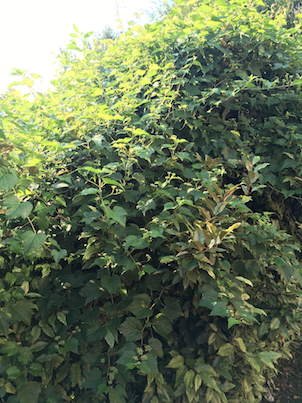I'm having problems with an invasive vine that climbs over and covers hedges and trees, but I've found it difficult to identify on the internet. A local plant ecologist in Alexandria, VA identified it as porcelain-berry from some pictures, but I don't recall ever seeing the characteristic multicolored berries on it. I've seen these vines for a few years now---is it possible for porcelain-berry to not actually produce berries? Somebody else thought it might be wild grape, but the leaves don't look quite the same to me. Can anybody confirm the porcelain-berry diagnosis or offer an alternative identification?
Notice the tendrils with which the vines attach themselves to the host.
EDIT: The vine is now positively identifiable as porcelain berry:








